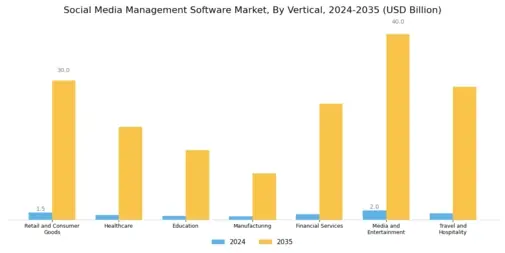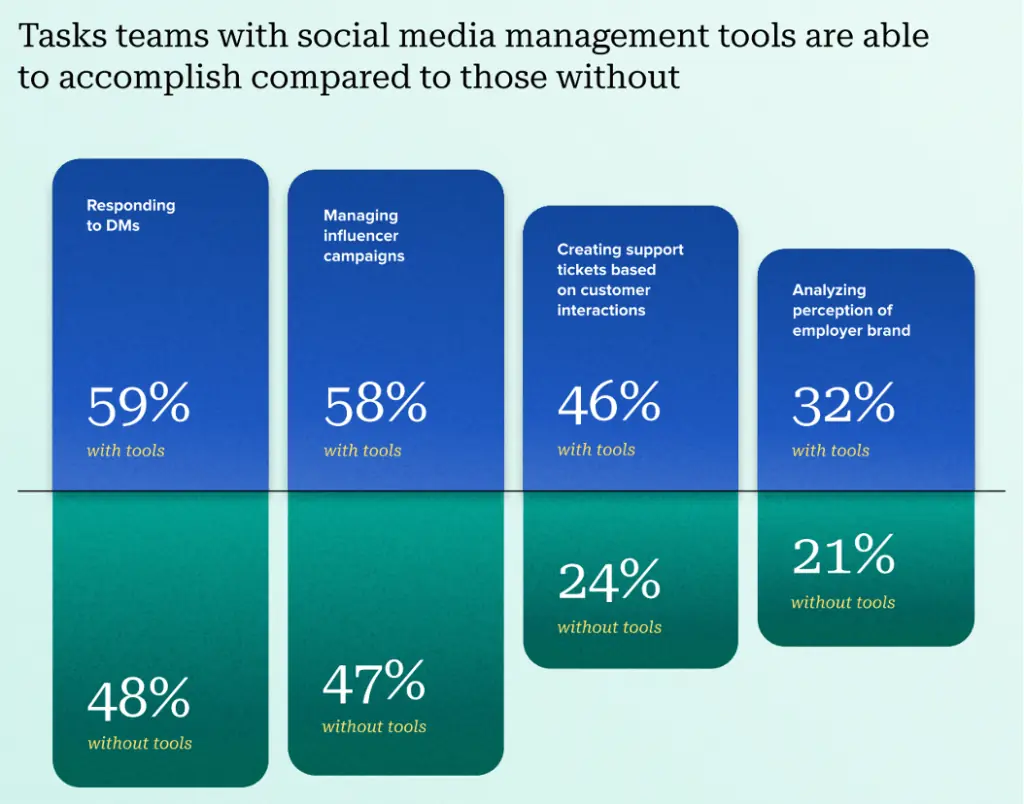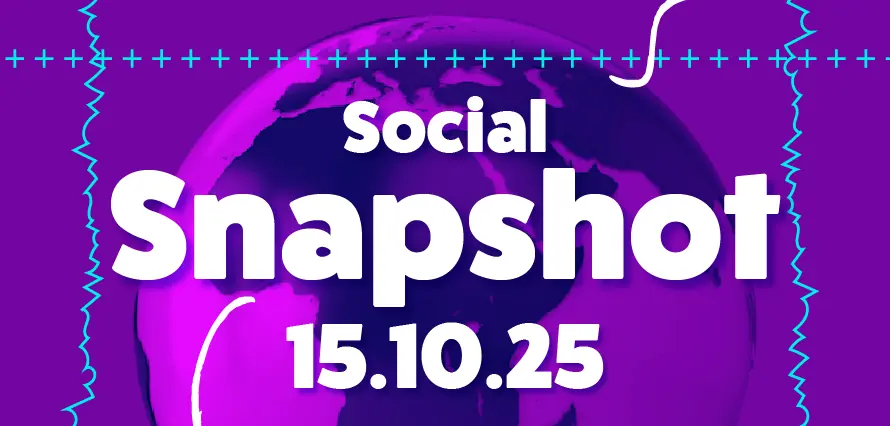October 15, 2025
Social schedulers vs native: what actually works
You’re managing a posting plan that never quits. Copy, links, tags, alt text, approvals, and the “can we move this to Thursday?” Loop. You’re holding social strategy in one hand and a calendar in the other, trying to keep both upright. At immediate future, we feel ya!
Nearly half of social marketers say they don’t have enough bandwidth to complete their work, with 63% citing manual tasks as blocking high-impact projects. Schedulers don’t just save time, they unlock the capacity for strategy, listening, and relationship-building that actually moves metrics.
Scheduling tools won’t write the idea, but they do lower the noise. They give you structure, timing intelligence, and clean approvals so good work can be delivered on time.
And even better, companies using scheduling tools cut social media management time by 62% on average, that’s 6-9 hours saved per week Bizbot

And there are usually some cute enhancements in the tools. Ones that tap into learnings from your own data and your own audience. For instance, Sprout’s Optimal Send Times and Hootsuite’s Best time to publish look at your own results and surface the right windows, so you’re posting when your people are actually there.
Right, let’s put the “only post natively” chat to bed
I get why people say it. Posting natively feels purer. You’re “in-platform”, you reply fast, you look alive. Lovely. But the blanket claim that approved schedulers tank reach? The evidence doesn’t back it.
Instagram’s CEO settled this. Adam Mosseri directly addressed the myth in a Q&A: “No it doesn’t, there was a bug where it did affect unconnected reach but that was many, many months ago and it has since been fixed. I use scheduled posts all the time for my own videos, it does not affect your reach.”
The scheduling penalty myth originated in 2011 when Facebook temporarily limited reach from third-party tools, but they fixed it by late 2011. The algorithm now treats scheduled and native posts identically
Here’s what we actually know, with sources you can wave at your CMO.
The evidence: third-party scheduling isn’t a penalty
- Hootsuite ran an Instagram test this spring. Scheduled posts through their tool performed on par with native; in most cases scheduled posts actually edged ahead. No mysterious punishment from the algorithm, just normal ranking based on quality and behaviour. Social Media Dashboard
- Buffer have been debunking the myth for years and still say the same: there’s no inherent engagement drop from using approved scheduling tools. Craft and follow-through matter more than the button you press. Buffer
- Agorapulse surfaced similar findings in a cross-platform comparison: in their test, third-party posted content sometimes beat native. Their caveat is the sensible one: don’t choose tools for “reach hacks”, choose them for operations. Support.gaggleamp.com
- Platforms expose official publishing routes on purpose. Instagram’s Content Publishing API (the same family your scheduler uses) supports posts, Reels and even Stories. If Meta wanted to punish API-published content, they wouldn’t keep expanding the API. Facebook for Developers
- On LinkedIn, the “scheduled post penalty” meme does the rounds every year. Power users and analysts have spent months testing it and calling it dead. What does hurt is spammy automation or ghosting your comments. LinkedIn
So no, there isn’t a blanket penalty for approved third-party scheduling. The problems start when people use grey-area automation, mass-DM nonsense, or let a queue run without a human present. That’s not a scheduler issue; that’s a judgement issue.
Adoption and ops reality: why teams do use schedulers
This isn’t a niche workflow any more; it’s how expert teams keep pace.
“Expert” social teams (the ones confident tying social to commercial outcomes) are more likely to use social management software (58% adoption). Leadership commentary around the same research also shows those teams lean into link tracking and marketing automation to measure properly. Net Influencer. Oh and it is worth mentioning that 83% of successful marketers use scheduling and automation tools

And the efficiency is proven. Sprout Social users saw 268% ROI over three years, with $1.3M in savings and 60% productivity gains
Of course, now we wouldn’t get away without mentioning Ai. AI is now mainstream in social ops. Industry trackers put usage in the 80%+ range for marketers. And those AI helpers are increasingly built into scheduling stacks for planning, timing, repurposing and QA. Hubspot
The other massive challenge is that the data load is huge. Metricool’s 2025 benchmark analysed 1.38m accounts and 21m+ posts across eight networks; Buffer’s Instagram research looked at 4m+ posts. At that scale, timing and cadence tools aren’t “nice to have”, they’re how you stop guessing. Metricool. It can be very useful for finding the sweetspot, like best posting frequency on LinkedIn
I mean ultimately, efficiency matters. UK leaders report losing three working weeks a year to martech faff; many say they’re regularly pulled off creative work to fix tools. Clean, integrated scheduling + analytics claw time back.
When to schedule and when to go native (the adult answer)
- Schedule when you’re running volume across markets, need approvals, and want timing intelligence from your own results. This is most days for big brands.
- Go native when you need fiddly extras or nuance: Stories stickers, last-minute context, or a sensitive moment.
What actually moves performance (and what doesn’t)
- Cadence + timing consistency. Use your tool’s send-time models and compare to your current calendar. Don’t copy someone’s “global best time” graphic; use your data.
- Format strategy. Tools help you plan, but format still leads outcomes. Buffer’s analysis of 4m+ Instagram posts showed Reels dominate reach while carousels win on certain engagement behaviours. Your scheduler won’t fix a format mismatch.
- Live presence. Schedule the backbone, then ring-fence two daily windows for comments and DMs. Every myth thread about “tools kill reach” really ends up being “we didn’t show up after posting”.
When optimized properly, teams report 192% increase in engagement, 70% boost in website traffic, and 40% overall ROI increase How Social Media Scheduling Can Save Time and Increase ROI
The most-used tools (menu, not a mandate)
This table reflects broad usage signals (G2/Capterra shortlists, vendor docs) and feature depth. It’s not our recommendation list; it’s your shortlist starter to test in your stack.
Use this as a menu to test in your stack. I’ve focused on feature coverage and market presence.
| Tool | Best for | Approvals & roles | Timing intelligence | Bulk / queues | Accessibility fields | Sources |
| Sprout social | Enterprise control, audit trails | Yes | Optimal send times / viralpost | Yes | Alt-text in workflow | hootsuite |
| Hootsuite | Analytics + calendar at scale | Yes | Best time to publish | Yes | Alt-text by network | sprout social |
| Buffer | SMB efficiency, first-comment tidy-ups | Roles on paid tiers | Guidance via analytics | Queues + csv | First comment for linkedin | buffer |
| Later | Ig/TikTok-led planning | Basic approvals | N/a | Bulk tools, auto-publish | N/a | buffer |
| Metricool | Plan + publish + measure | Basic roles | Best-time guidance | Bulk | N/a | metricool |
| Coschedule | Evergreen reshares | N/a | Requeue automation | Requeue groups | N/a | dash social |
| Publer | Recycling at scale | N/a | Recycle windows | Bulk + recycle | N/a | the gain blog |
| Heyorca | Client approvals without logins | Link-based client review | N/a | Yes | N/a | hootsuite |
| Planable | Fast multi-market sign-off | Configurable, multi-level | N/a | Yes | N/a | planable |
| Adobe express content scheduler | When your creative lives in adobe | Native roles | N/a | Calendar + multi-account | Add alt-text before publish | sprout social |
How to choose with a clear head
Check these first, then run a two-week pilot with real posts and real approvals.
- Approvals and audit trails that match your governance.
- Accessibility fields in-flow (alt text, captions) so quality doesn’t slip.
- Timing suggestions based on your own results.
- Bulk tools, first-comment support, UTM templates, and a global pause.
- Coverage you actually need: LinkedIn documents, TikTok auto-publish, Threads scheduling.
- Integrations for reporting so you can join social to web analytics cleanly
Platform quirks that still favour native
- Stories stickers and certain LinkedIn behaviours still feel smoother in-app. Plan to finish those natively, and protect two daily live windows for replies and DMs. That’s the difference your audience actually feels. Accessible-social.com
You don’t have to pick a side. Use a scheduler for the backbone and your approvals; go native when you need the extra control or the moment is sensitive.
Remember, the evidence doesn’t support a blanket penalty on compliant tools. The variable is still the craft, the timing, and the live presence after the post goes out. The research shows the scheduling-versus-native debate is a distraction. Engagement depends on what you’re posting and when, not how. Get the ops right and your team wins back hours to make better work and be present where it counts.
